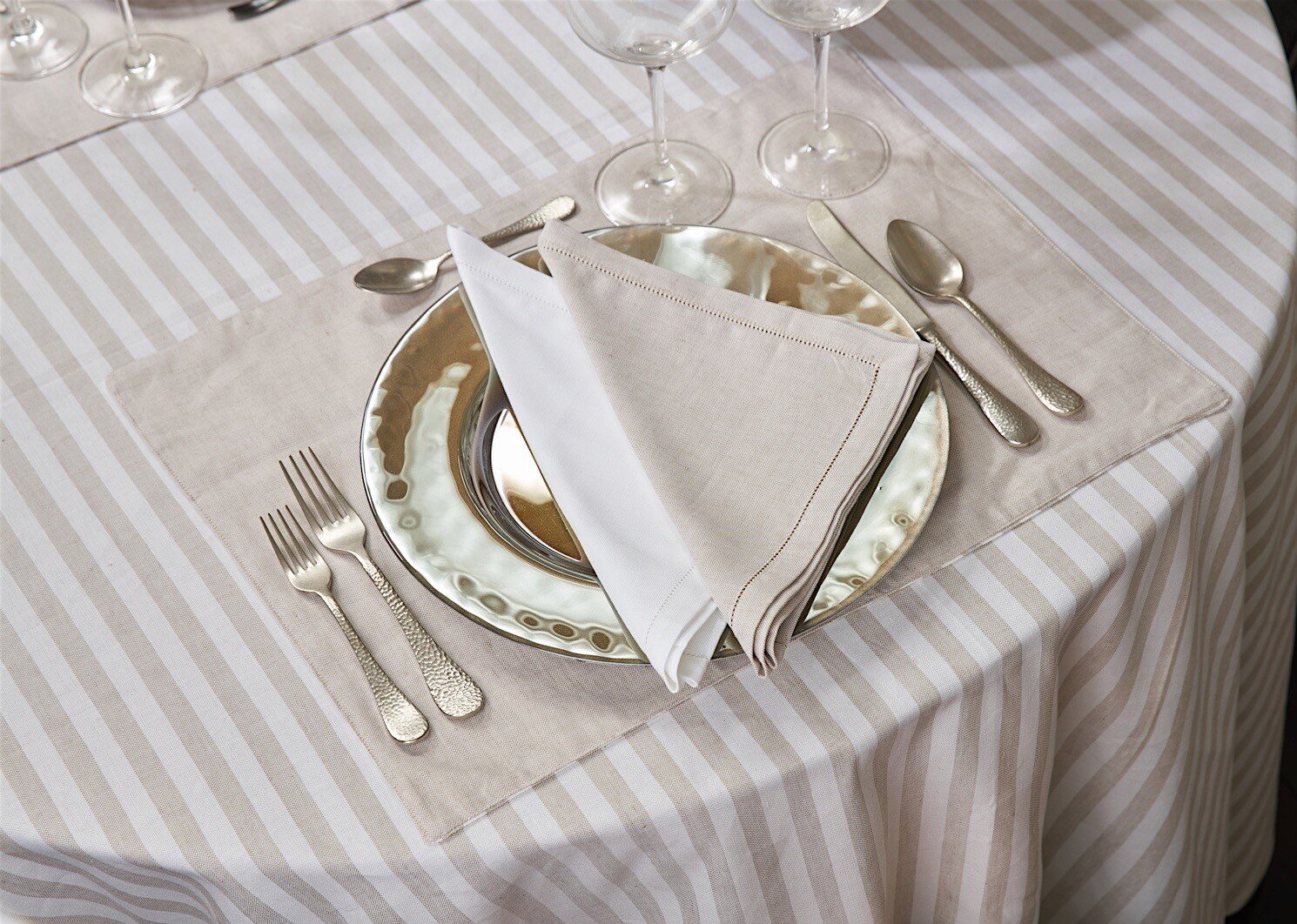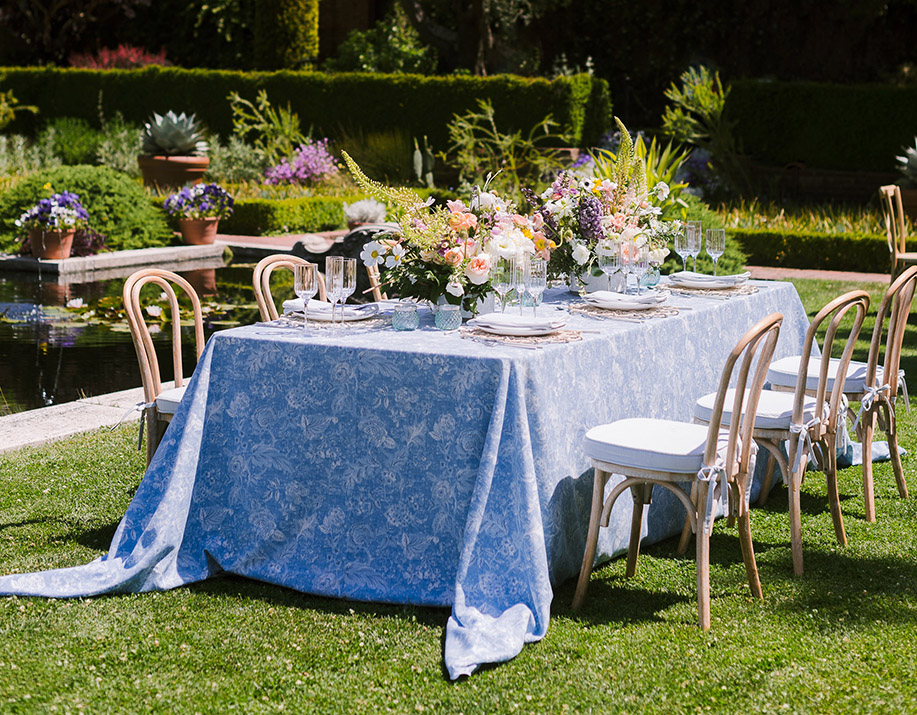Elegant Table Runner Ideas: Change Your Dining Experience
Linen Textile Developments: Checking Out Modern Trends and Creative Applications in Design and Textile Market
From sustainable production methods to innovative weaving innovations, the evolution of linen is improving the landscape of the fabric industry. As we dig right into the worlds of innovative layout applications and the introduction of bed linen blends and crossbreed textiles, a new chapter unravels in which linen's duty in future textile technologies takes center stage.
Sustainable Practices in Linen Production
Lasting practices in linen manufacturing have actually come to be increasingly critical in the textile sector's efforts to reduce environmental effect and advertise moral sourcing techniques. Linen, an all-natural fiber derived from the flax plant, provides a variety of benefits such as resilience, breathability, and biodegradability. Nonetheless, typical approaches of linen manufacturing can entail considerable water consumption, pesticide usage, and energy-intensive processes.
To resolve these difficulties, several textile suppliers are embracing lasting practices throughout the bed linen production process. This consists of sourcing flax from natural farms that avoid harmful pesticides and chemicals, executing water-efficient retting methods to remove fibers from the flax stalks, and utilizing green dyes and coatings. Additionally, some firms are purchasing sustainable power resources to power their production centers and lowering waste through recycling and upcycling efforts.
Technological Improvements in Bed Linen Weaving
With the growing focus on lasting practices in bed linen production, the textile sector is now experiencing a rise in technical advancements especially targeted at transforming the art of bed linen weaving. These technologies are reshaping the method bed linen textiles are created, using raised effectiveness, top quality, and imagination in weaving techniques.
Among the essential technological innovations in bed linen weaving is the integration of computerized looms. These sophisticated looms are geared up with software that enables complex and elaborate layouts to be woven with precision. By digitizing the weaving process, makers can attain greater consistency and accuracy in their bed linen fabrics.
In addition, advancements in thread spinning innovation have actually allowed the production of finer and even more resilient bed linen yarns - table cloths. This causes softer and smoother bed linen fabrics that retain their high quality even after several usages and washes
Furthermore, the advancement of environmentally friendly dyeing procedures and coatings for linen fabrics is acquiring traction. These lasting practices not only lower the environmental effect however additionally satisfy the raising customer need for morally created textiles.
Creative Layout Applications for Bed Linen
Ingenious imaginative techniques are progressively shaping the innovative layout applications for linen in the fabric market. Linen's all-natural visual allure and ability to blend with other textiles make it a favorite selection for creating one-of-a-kind garments and accessories that cater to the eco aware customer.
Additionally, designers are trying out linen in home decor, using its long lasting and breathable nature to craft stylish home furnishings such as drapes, bedding, and furniture. The texture and drape of linen bring a sense of sophistication and convenience to indoor spaces, adding a touch of sophistication to modern-day homes.

Bed Linen Blends and Hybrid Fabrics

Crossbreed materials, on the various other hand, take the concept of mixing an action better by including additional elements such as metallic strings, recycled products, or conductive fibers. These cutting-edge textiles not just increase the layout possibilities however also introduce useful aspects like conductivity, antimicrobial buildings, or boosted longevity. Hybrid materials are increasingly being made use of in numerous industries, consisting of style, interior layout, and technological textiles, where the need for multifunctional materials gets on the surge.
Bed linen's Duty in Future Fabric Innovations

In the realm of future fabric technologies, linen is expected to be an essential gamer in the development of innovative practical textiles. Researchers and developers are discovering means to enhance linen's intrinsic qualities with technical innovations, such as incorporating smart fabrics, nanotechnology, and performance coatings. These innovations intend to elevate linen's performance features, making it ideal for a broader variety of applications, from activewear to safety clothes.
Additionally, the mix of bed linen with other natural or artificial fibers opens up limitless opportunities for developing novel fabrics with special buildings and capabilities. By leveraging bed linen's features and exploring ingenious blends, the textile sector is positioned to introduce exciting developments that accommodate developing consumer demands and sustainability needs.
Final Thought
Finally, the expedition of lasting methods, technical developments, imaginative layout applications, linen blends, and its duty in future textile innovations highlight the continuous evolution of linen textile in the contemporary layout and textile market. With a concentrate on technology and creative thinking, the adaptability and green nature of linen make it a useful material for designers and manufacturers alike, paving the method for further advancements and advancements in the field of textiles.
As we dive right into the worlds of innovative layout applications and the introduction of linen blends and crossbreed textiles, a brand-new phase unfolds in which bed linen's duty in future textile technologies takes facility stage.
Discovering the fusion of linen with various other materials has led to the introduction of cutting-edge blends and hybrid textiles in the contemporary textile market. Bed linen blends offer a distinct mix of the features of linen with those of various other fibers, resulting in textiles that have improved look at this site residential properties such as enhanced durability, enhanced draping, and reduced wrinkling.The development of linen blends and hybrid fabrics has set the phase for Bed linen to play an essential role in driving future textile developments.In the realm of future textile advancements, linen is anticipated to be an essential player in the advancement of sophisticated useful textiles.